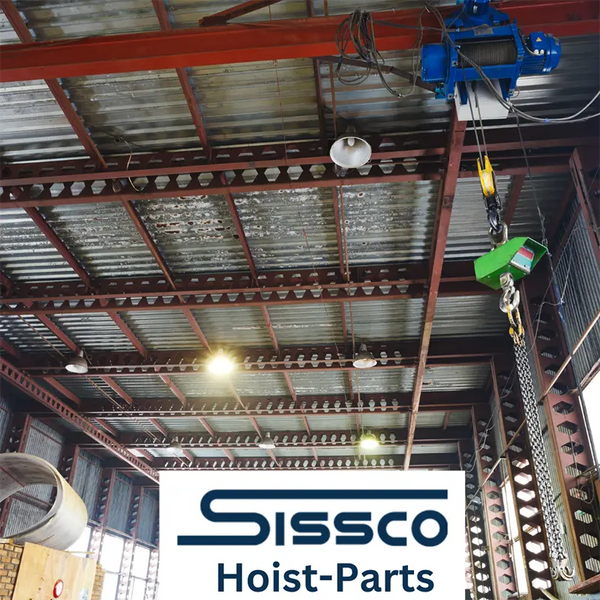 When a hoist brake starts to fail, subtle signals appear long before the brake stops working completely. Most operators, busy with daily tasks, overlook minor jerks or unusual noises, assuming these signs are ordinary wear. However, brake failures rarely occur suddenly without prior indications. They gradually develop from small, easily dismissed irregularities into severe malfunctions capable of abruptly stopping your entire operation.
When a hoist brake starts to fail, subtle signals appear long before the brake stops working completely. Most operators, busy with daily tasks, overlook minor jerks or unusual noises, assuming these signs are ordinary wear. However, brake failures rarely occur suddenly without prior indications. They gradually develop from small, easily dismissed irregularities into severe malfunctions capable of abruptly stopping your entire operation.
Understanding exactly how and why Budgit hoist brakes deteriorate can help your team pinpoint problems early, preventing operational downtime and serious safety risks. Recognizing these brake issues, specific to your Budgit hoist's design, can save costly repairs and keep your processes running efficiently.
What Specific Warning Signs Indicate Brake Issues in a Budgit Hoist?
Brake systems in Budgit hoists usually exhibit characteristic signs when starting to fail. Recognizing these quickly reduces unexpected failures and prevents serious safety hazards. The most common indicators specific to Budgit hoist brakes include:
- Sudden Jerking Movements: If your load doesn't smoothly decelerate or stop but jerks or grabs unevenly, the brake discs or spring assemblies could be compromised. Jerking indicates uneven friction on braking surfaces and can quickly escalate into loss of control.
- Unusual Brake Noise: Budgit brake systems typically function quietly. Clicking, grinding, or loud squeaking sounds during normal operation suggest internal brake wear—particularly of friction plates or brake shoes.
- Reduced Stopping Responsiveness: When the brake takes noticeably longer to engage or fully stop, internal spring mechanisms or friction materials may be worn out, compromising safe load handling.
Consistently monitoring these unique signs ensures swift identification and effective preventative action.
How Do Routine Inspections Uncover Budgit Brake Problems Early?
Routine inspections tailored specifically for Budgit hoist brakes help teams identify early brake deterioration before operational disruptions occur. General inspections are often insufficient, as Budgit hoist brake components have particular wear patterns and vulnerabilities that general methods may overlook. A proper Budgit-focused brake inspection involves several key steps.
- Checking the friction discs for signs of glazing or uneven wear—issues particularly common in Budgit brake designs.
- Measuring brake spring tension according to Budgit's factory specifications, as tension loss directly impacts braking accuracy.
- Regular load tests to verify brake responsiveness, especially under heavier or irregular loads.
Systematically conducting these specific checks ensures early identification of problems, directly preventing more serious failures down the line.
Can Immediate Brake Maintenance Prevent Significant Budgit Hoist Failures?
Identifying early symptoms is crucial, but only immediate maintenance can actually stop a brake failure from happening. Addressing brake issues swiftly prevents minor malfunctions from escalating into hazardous or operationally costly scenarios. Immediate maintenance actions typically include:
- Replacing worn friction discs or brake shoes when wear becomes evident.
- Adjusting or replacing brake springs showing reduced tension.
- Lubricating key brake pivot points regularly to maintain smooth brake action.
These targeted maintenance actions prevent more significant brake problems from developing, keeping your hoist operationally reliable.
Budgit Hoist Brake Failures are Preventable
Brake failures in Budgit hoists typically don't occur without warning. Essential preventive measures include recognizing subtle, model-specific signals early, systematically inspecting critical brake components, and performing immediate maintenance actions. Taken together, these proactive steps create an integrated solution, dramatically reducing the risk of sudden operational interruptions. With focused vigilance on your hoist's brake performance, you ensure not just continuous operational efficiency but also a safer working environment overall.
Related Reading
-
Maximizing Hoist Performance with Budgit Replacement Parts (Budgit Series 6000 Air Hoists)How to Get the Right OEM Budgit Hoist Parts - Proper maintenance of these essential components extends the life of your Budgit Series 6000 Air Hoists and ensures they operate safely and efficiently.
- The Differences Between Budgit Hoist Models
- Budgit Hoists: Excellence in Lifting with Genuine Replacement Parts